轻型电动车物流车车架设计(含CAD零件装配图,CATIA三维图)
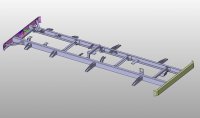
轻型电动车物流车车架设计(含CAD零件装配图,CATIA三维图)(任务书,开题报告,文献摘要,外文翻译,论文说明书14000字,CAD图9张,CATIA三维图)
摘要
近些年来,物流行业飞速发展,推动了国民经济的快速发展。伴随物流行业的高速发展,一些问题也逐渐凸显。例如物流成本居高不下,物流运输过程伴随大量的环境污染和能源消耗等,这些问题成为制约快递行业发展的首要因素。因此,如何在降低运输成本的同时,又实现节能环保成为各大物流公司的追求目标。
随着纯电动汽车技术的发展成熟,越来越多纯电动汽车逐渐投入到各个行业领域。纯电动汽车相比于传统内燃机汽车,由于是运用电能作为动力,相对于化石燃料成本更低,同时又不会排放废气,造成环境污染,因此完美契合物流行业的发展需求。与内燃机汽车不同,纯电动汽车以电动机和电池组为动力总成,在车架上的安装布置方案与内燃机汽车有所不同,因此,如何设计出一款满足布置需求又安全可靠的轻量化车架是纯电动物流车开发过程中的一大难题。
目前在车架结构设计上主流方法是运用计算机辅助工程软件进行拓扑优化,在保证结构的力学性能的基础上得到材料的最合理布局,为结构设计布局提供指导,在完成初步设计以后,利用有限元软件建立各种工况下的有限元模型,对其静态结构、模态及疲劳强度等参数进行分析,验证结构是否合理,来指导改进过程。 [版权所有:http://DOC163.com]
本文以轻型纯电动物流车车架为研究对象,在有限元软件ANSYS中建立简化模型,进行基于变密度法的拓扑优化算法,根据尺寸条件、载荷分布及边界条件建立拓扑优化模型。为车架的设计,横梁的布局等提供参考,结合各个总成的布置位置在CATIA中建立三维模型。再根据实际的车架模型和尺寸进行有限元建模和分析,通过强度校核和模态分析,对初步的结构方案进行局部改进,最终获得满足使用要求和强度刚度条件的车架结构方案。
关键词:车架;有限元;拓扑优化;轻量化
Abstract
In recent years, the rapid development of the logistics industry has promoted the rapid development of the national economy. With the rapid development of the logistics industry, some issues have gradually become prominent. For example, logistics costs remain high, and the logistics transportation process is accompanied by a large amount of environmental pollution and energy consumption. These problems have become the primary factors that restrict the development of the express delivery industry. Therefore, how to achieve energy conservation and environmental protection while reducing transportation costs has become the pursuit goal of major logistics companies.
[资料来源:Doc163.com]
With the development of pure electric vehicle technology, more and more pure electric vehicles are gradually being put into various industrial fields. Compared with traditional internal-combustion vehicles, pure-electric vehicles use electric energy as their power source, have a lower cost relative to fossil fuels, thus perfectly satisfying the development needs of the industry. Unlike internal combustion engine vehicles, pure electric vehicles use electric motors and battery packs as their powertrains. The installation scheme on the frame is different from that of internal combustion engine cars. Therefore, how to design a lightweight and lightweight vehicle that satisfies the layout requirements is safe and reliable. The rack is a major problem in the development of pure electric logistics vehicles.
At present, the mainstream method in the frame structure design is to use computer-aided engineering software for topology optimization, and to obtain the most reasonable layout of materials on the basis of ensuring the mechanical properties of the structure, provide guidance for structural design layout, and after the initial design is completed, the use of limited Meta software establishes a finite element model under various operating conditions, analyzes its static structure, modality and fatigue strength parameters, and verifies whether the structure is reasonable to guide the improvement process.
[版权所有:http://DOC163.com]
This paper takes the light pure electric vehicle frame as the research object, establishes the simplified model in the finite element software ANSYS, carries on the topological optimization algorithm based on the variable density method, establishes the topological optimization model according to the size condition, the load distribution and the boundary condition. Provides a reference for the design of the frame, the layout of the beam, etc., and builds a three-dimensional model in CATIA in conjunction with the layout of each assembly. Then based on the actual frame model and size of the finite element modeling and analysis, through the strength of the check and modal analysis, the partial improvement of the preliminary structure of the program, and finally to meet the requirements of the use of the strength and stiffness conditions of the frame structure.
Key Words:Frame;Finite Element;Topology Optimization;Light Weight
[资料来源:http://www.doc163.com]
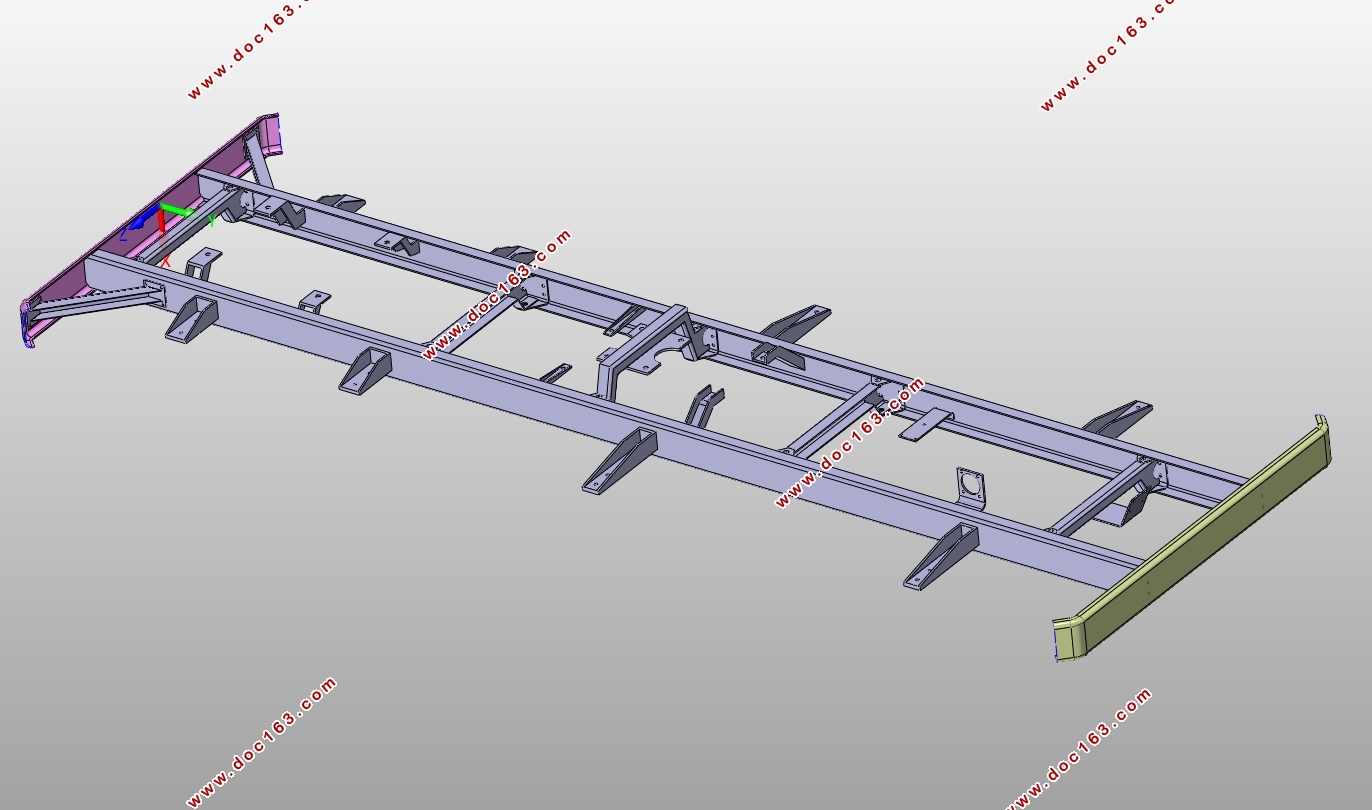

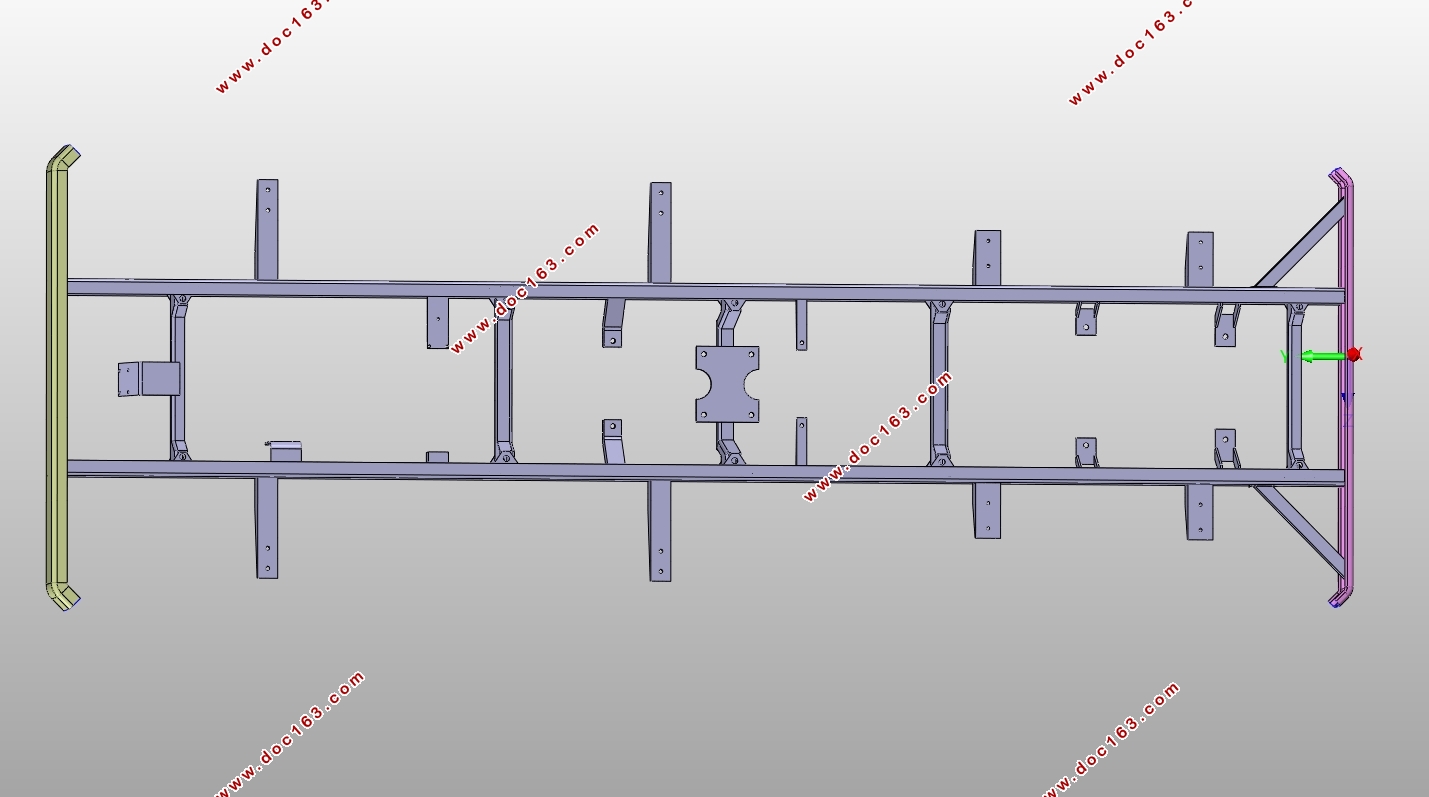

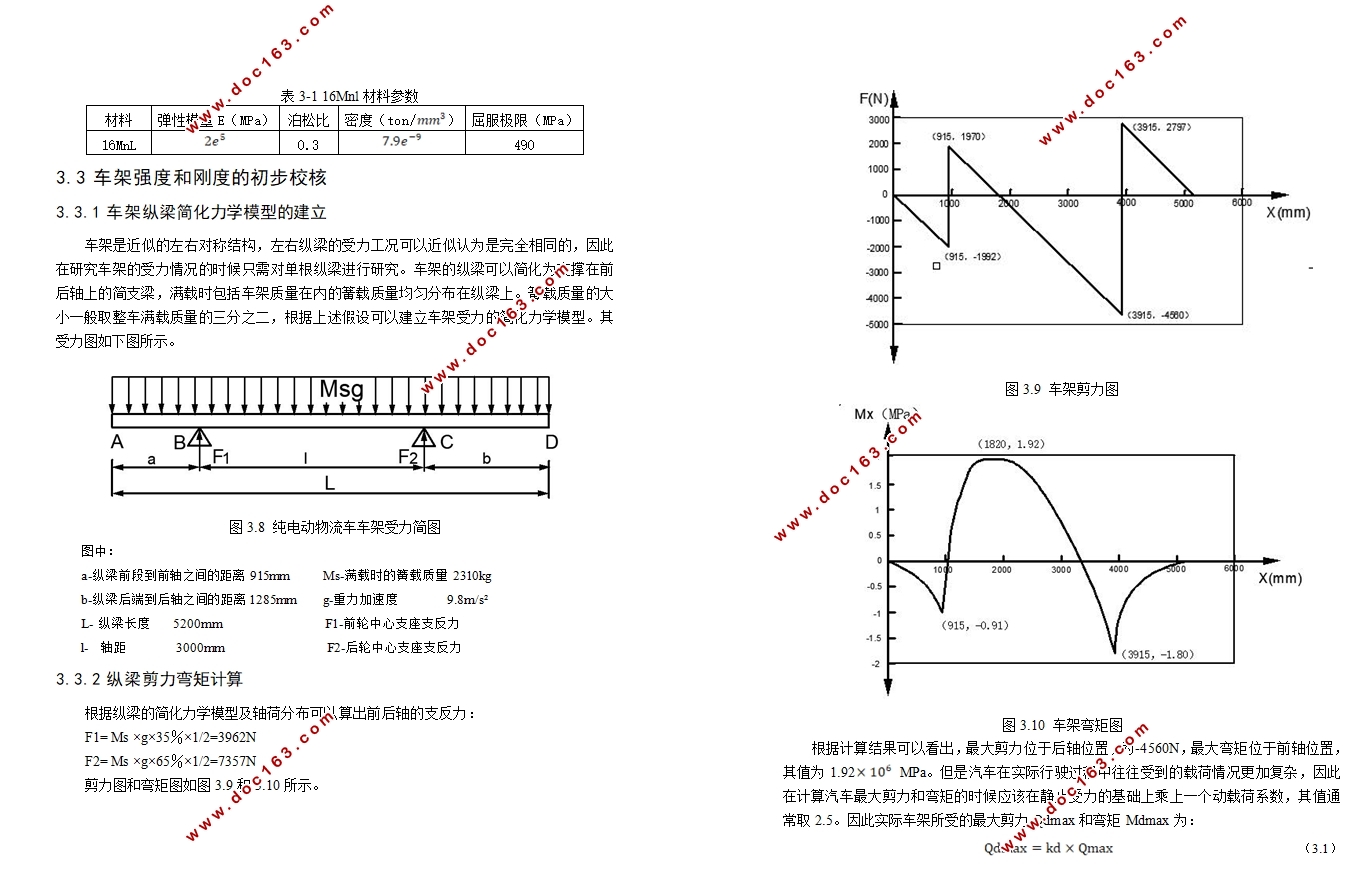 [资料来源:Doc163.com]
[资料来源:Doc163.com] 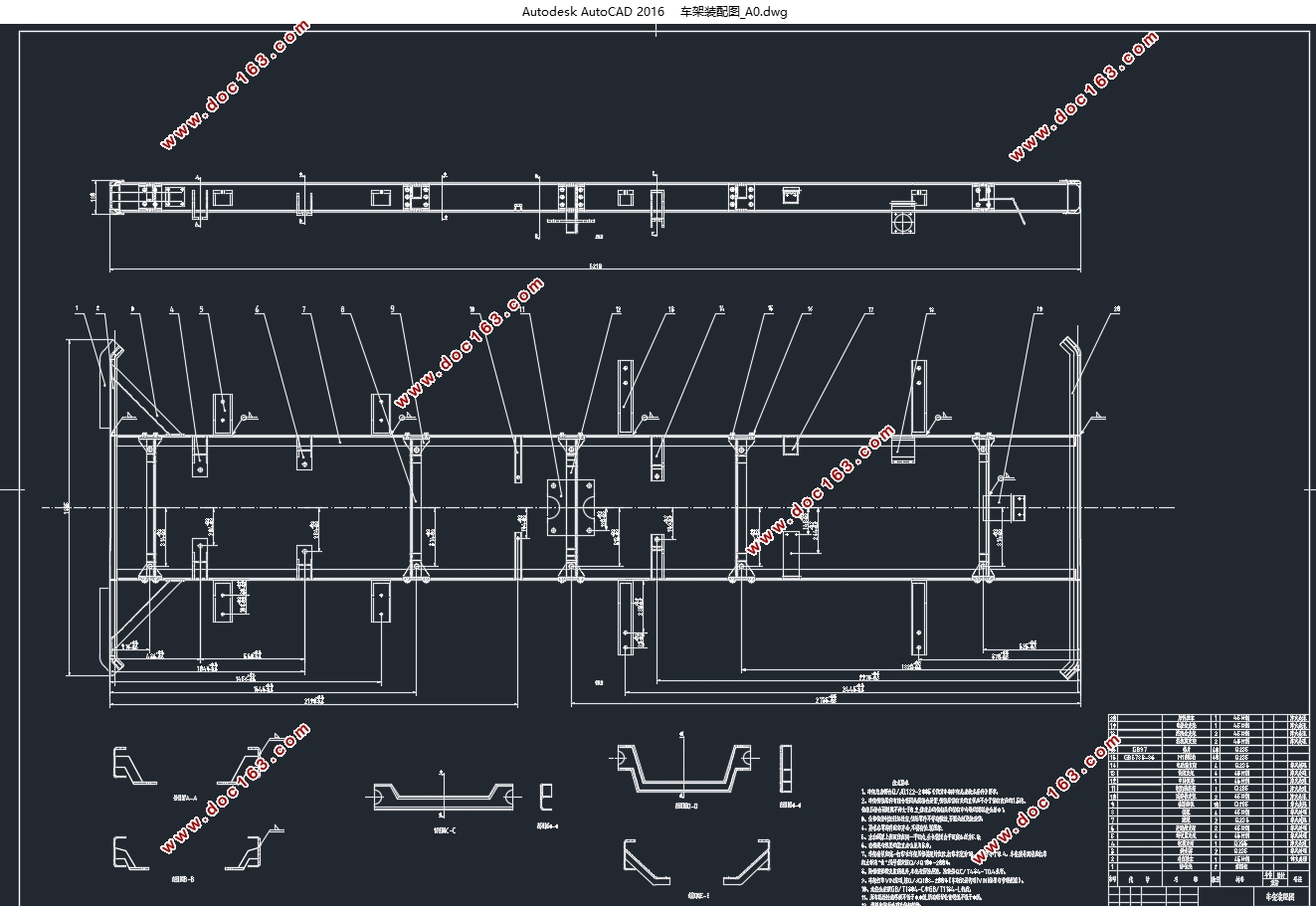
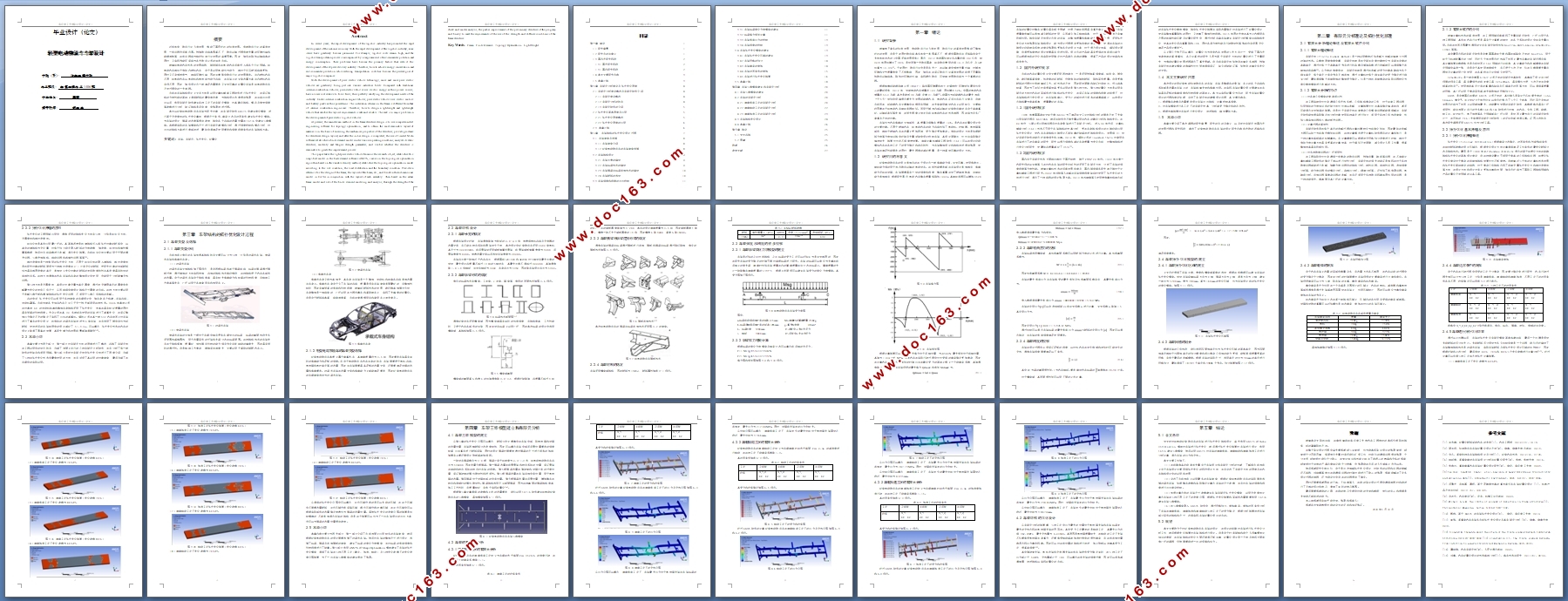


目录 [资料来源:http://Doc163.com]
第一章 绪论 1
1.1研究背景 1
1.2研究目的与意义 1
1.3国内外研究现状 2
1.3.1国外研究现状 2
1.3.1国内研究现状 2
1.4本文主要研究内容 3
1.5本章小结 3
第二章 有限元分析理论及拓扑优化原理 4
2.1有限元分析理论概述及有限元软件介绍 4
2.1.1有限元理论概述 4
2.1.2有限元分析的特点 4
2.1.3有限元软件的介绍 5
2.2拓扑优化基本原理及应用 5
2.2.1拓扑优化原理概述 5
2.2.2拓扑优化原理的应用 6
2.3 本章小结 6
第三章 车架结构的拓扑优化设计过程 7
3.1 车架类型及选择 8
3.1.1车架类型介绍 8
3.1.2轻型电动物流车的车架类型选择 8 [来源:http://www.doc163.com]
3.2车架结构设计 9
3.2.1车架长宽的确定 9
3.2.2车架纵梁形式的确定 9
3.2.3车架横梁与纵梁连接形式的确定 10
3.2.4车架材料的选定 10
3.3车架强度和刚度的初步校核 11
3.3.1车架纵梁简化力学模型的建立 11
3.3.2纵梁剪力弯矩计算 11
3.3.3车架弯曲应力的校核 13
3.3.4车架刚度的校核 13
3.4车架拓扑优化模型的建立 13
3.4.1车架拓扑优化区域的建立 13
3.4.2车架网格的划分 14
3.4.3车架载荷的施加 14
3.4.4车架边界条件的施加 15
3.4.5车架进行拓扑优化结果 16
3.5本章小结 18
第四章 车架三维模型建立和有限元分析 20
4.1车架三维模型的建立 20
4.2车架的有限元分析 20
4.2.1满载弯曲工况的有限元分析 20
4.2.2满载制动工况的有限元分析 22
4.2.3满载加速工况的有限元分析 23
4.3车架结构优化设计 24
4.4本章小结 26
第五章 结论 25
5.1全文总结 25
5.2展望 25
致谢 26
参考文献 27 [资料来源:http://doc163.com]
上一篇:轻型电动物流车动力系统设计(含CAD图,CATIA三维图)
下一篇:轻型电动物流车悬架系统设计(含CAD零件装配图,CATIA三维图)
